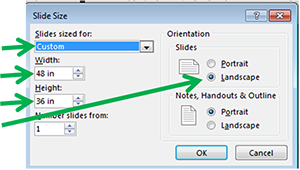Abstract Submission Guidelines
If you want to present your work at a regional or national conference, you will most likely be asked to submit an abstract as part of the application process. An abstract is essentially a brief summary of your work, which should make a reader want to see your presentation. The abstract you write should be short and understandable to a general (campus-wide) audience:
- Have a clear title
- Be concise (the abstract should be 200 words or less in length)
- If possible, avoid trade names, acronyms, abbreviations, or symbols (you would need to explain them, and that takes too many words)
- The required font for the abstract is Times New Roman, 12 point.
- Complete the online proposal submission form to submit your abstract.
- Deadline for submissions is November 3, 2024. All proposals must be submitted by midnight, EST to be considered.
How to Write an Abstract
If you have never written an abstract before, here are the basic components of an abstract in any discipline (this is adapted from the University of Kentucky guidelines):
- Motivation/research question: What motivated you to start this project? Why is it of interest? Why should we care about this problem? What practical, scientific, theoretical or artistic gap is your research filling? (e.g. does your research create new knowledge or involve a new idea, method, process or product?)
- Methods/approach: What did you actually do to get your results, or what do you intend to do? (e.g. analyzed three research articles, completed a series of watercolors, interviewed 25 social work students, monitored water quality at three lakes)
- Results/product: What did you learn/create, or what do you expect to learn/create once your project is completed?
- Conclusion/implications: What are the larger themes or implications of your work? (e.g. what is the “big picture” take-home message from your presentation?) How does this relate to the research question or knowledge/artistic gap you identified in step 1? These can be expected conclusions if the project is still in progress.
The emphasis given to each of these four abstract components can vary by subject. It may help to look at some examples from last year’s conference, at the end of the page. We also recommend composing your abstract in a word processing program (such as Microsoft Word), so that you can proof read it, then pasting your proposal into the text box provided in the online submission form.

